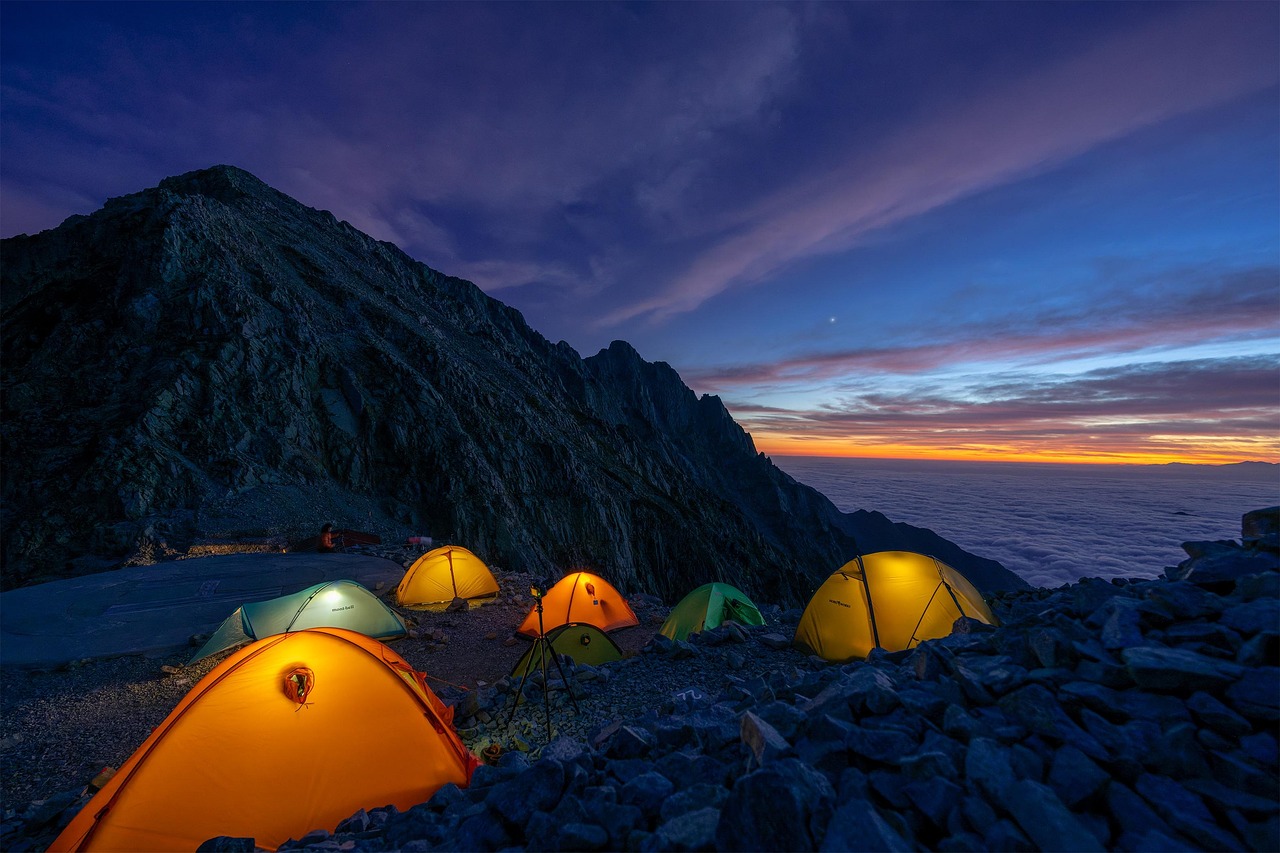Comprehensive Tent Rental Guide for Event Planners: Cost to Rent a Tent
Hosting an outdoor event? Be it a wedding, corporate event, or weekend festival, tents are a staple of weatherproof planning. But calculating the cost of tent rental can seem like more of a maze. Let’s dig into the elements that go into the pricing and explore examples from the real world, and come even close to a time when buying might make sense over renting — ending with a pro tip on how to get quality tents directly from their manufacturers.
Why Tent Rental Prices Are All Over the Map
Tent rental prices vary depending on several factors:
Tent Type
Basic Pop-up Canopies: Least expensive, typically ranging from $50–$200/day.
Larger Frame Tents: Clear-span structures with aluminum frames (like those by Changzhou Meister Tent Co., Ltd.) can go for $1,000–$5,000+ because of their durability and wind resistance.
Tent Size
20x20 ft Party Tent: Could rent for around $300/day.
40x100 ft Warehouse Tent: Common for trade shows, can exceed $3,000/day.
Urban Locations
Delivery and Labor Fees: Higher in urban areas. For instance, Tent Renters Supply based in Tampa covers all 50 states, but prices vary by region.
Add-Ons
Sidewalls, Flooring, Heating/Cooling Systems, and Lighting: These can add 20–50% to the base price.
Real-World Pricing Examples
Tents for Weddings
Elegant Peaked or Clear Tents: Cost between $2,000–$10,000 for a 3-day rental, depending on capacity (100–500 guests).
Corporate Events
Modular “Clear Span” Tents: Cost between $1,500–$6,000/week. Many used for exhibitions are sourced from suppliers like Tian Xia Wei Jia Outdoor Products.
Pop-Up Canopies
10x10 ft Pop-Up Tents for backyard parties start at $50/day, though they are not meant for harsh weather.
Hidden Costs to Watch For
Permits
Some cities require permits for giant tents. For instance, Dongguan’s industrial alliance has made it easier to assemble materials for events, but regulations are still in place.
Installation
Labor Costs: Can add 100% to material costs. Self-installation poses risks; professionals ensure installations comply with safety codes.
Weather Insurance
5–10% of the total cost. Protects against rain or wind damage.
Rent vs. Buy: Under What Circumstances Does Ownership Pay Off?
“I think renting is a good option for one-off events, but people who plan to host regularly should definitely look into buying.”
Cost Comparison
Renting a 5x/year Mid-Size Tent: Might add up to $15,000 over a decade.
Buying the Same Tent from Manufacturers like U-Ke Development Co.: Upfront costs range from $8,000–$12,000.
Customization
Suppliers such as CNLeisureGoods provide personalized features (e.g., branded colors and bolstered structures) that rentals cannot.
Resale Value
High-Quality Aluminum-Frame Tents: If well-maintained, they can resell for 60–70% of their original value.
How to Source Tents Directly from Manufacturers
Collaborating with OEM suppliers can help eliminate intermediaries. For example:
Bulk Purchase Discounts
Chinese Factories like Free Mountaineer Outdoor Products manufacture tents at $20–$60/sq meter, ideal for event companies needing 50+ units.
Quality Assurance
Always verify ISO certifications and wind-rating tests. Changzhou Meister, for example, exports to over 60 countries and meets CE standards.
Lead Times
Expect 15–30 days to produce, so plan ahead.
Conclusion: Rent Smart, Invest Wisely
Tent rentals offer flexibility, but savvy planners understand when pivoting to ownership makes sense. If you’re willing to think about buying, working with a trusted manufacturer ensures premium quality and long-lasting savings.
If you need tents that are durable and customizable, look no further than CNLeisureGoods, a global supplier of ISO-certified event tents, trusted by planners in over 60 countries. From nuptials to stockrooms, their engineered solutions blend affordability with storm-ready reliability — because whatever your event may be, it deserves a foundation as steel-like as your vision.
The Tent Rental Saga: A Backyard Event Like No Other
It was one of those fine, indifferent days when you can’t tell if the sun is shining with genuine enthusiasm or merely making a hasty getaway. The kind of day when an outdoor event is both a dream and a nightmare, depending entirely on what time of day you look at it.
So there I was, just a simple fellow in the prime of my life, trying to navigate the murky waters of tent rental for an event I’d been roped into hosting. I had no idea what kind of tent I needed, but one thing was for certain: I didn’t want to end up looking like a fool at my own backyard shindig.
The Tent Rental Journey Begins
Let’s pause here and give credit where credit is due. Events, like families, are a complicated bunch. They are full of joy, of course, but also with occasional eruptions of chaos that can leave a person wondering whether they’re in the middle of a parade or about to be struck by an inconvenient tornado.
You see, the first thing that became clear as I ventured into this tent rental business was that tent prices are like a barrel of pickled herring—you never quite know if you’re going to get a good deal or something that smells suspiciously like trouble.
The Comprehensive Tent Rental Guide
It all started when I stumbled upon a pamphlet for the "Comprehensive Tent Rental Guide for the Wise and Diligent Planner" while I was having my second cup of coffee in the kitchen. And what did it say? That renting a tent was far more complicated than buying a dozen chickens for a dinner party. There were “factors” to consider, as they put it.
These factors, I realized in my more reflective moments, were like mysterious strangers who refuse to explain why they’re knocking on your door at midnight, but nevertheless, you know they mean business.
Tent Type: The Enchanting Riddle
Let’s begin with what the guide called “Tent Type.” Ah, yes—one of the most enchanting riddles of modern life. Apparently, if you were hosting a backyard event and could only afford to rent a tent made of “pop-up” canopies, you were a cheapskate, a lowly soul, destined for disaster in the form of a collapsing roof and soggy guests. Those cost about $50 a day, I was told—so cheap, in fact, that the price of a pop-up canopy could barely get you a sandwich in New York.
But I was thinking about my Aunt Margie, who was known to find delight in a cheap sandwich, and so, I briefly considered this option. But, as the guide so cunningly warned, pop-up tents weren’t intended to withstand “harsh weather,” and the weather was more unpredictable than a raccoon on a sugar binge.
The Larger, Noble Tents: The Temptation
Then came the larger, more noble options. They were the grand frame tents and clear-span structures that could cover your entire family and, probably, the neighbors' dog too. With prices running anywhere from $1,000 to $5,000 a day, I started to feel like a man preparing to sell his house for a tent rental.
It was a steep hill to climb, and no one, not even the ambitious guide, could guarantee that I'd make it to the top without losing my savings—or at least my will to live.
The Added Costs: Sidewalls, Flooring, and More
To make matters worse, these “premium” tents often required sidewalls, flooring, heating or cooling systems, and lighting. These were added costs that threatened to turn me into a nervous wreck, second-guessing whether my “event” was merely a hoax, designed by cruel fate to test my patience and my bank account.
But perhaps the real kicker came when I read that some locations, particularly urban ones, could add delivery and labor fees higher than your rent. No one had warned me that hosting an event in the city might be akin to renting a large yacht in the middle of the desert—ridiculous and utterly impractical.
Real-World Pricing Examples: A Shocking Revelation
It was then that I stumbled across the real gem of the guide, tucked away in a small corner like a prize-winning potato. It was a section on “Real-World Pricing Examples,” and oh, what an eye-opener it was! I’ll spare you the details, but suffice it to say, renting a tent for a wedding—particularly an elegant one, as the guide so optimistically put it—could cost anywhere from $2,000 to $10,000 for a mere three-day rental.
For an event as frivolous as a wedding, no less. And corporate events? Oh, they had their own price, almost as though they had somehow decided that regular mortals could not attend without first having their wallets professionally emptied.
The Dilemma: Rent or Buy?
I paused to reflect on all this. “Perhaps,” I thought, “I should simply buy a tent. After all, wouldn’t owning one be less like a nuisance and more like a friend who could help in times of need?”
That thought led me to a perplexing new path—the comparison between renting and buying. The guide, in its infinite wisdom, boldly stated that for those “who plan to host regularly,” ownership was clearly the way to go. To me, that sounded like a line delivered by someone who owned a few tents themselves and was trying to convince others to join the club.
But, alas, the numbers didn’t lie. Renting a mid-sized tent five times a year could cost upward of $15,000 over the course of a decade, whereas purchasing a tent could range from $8,000 to $12,000 upfront. This was a deal, they said, especially if the tent were of “high quality.”
In my more cynical moments, I wondered if they meant “high quality” as in “it won’t collapse at the first gust of wind.”
The Temptation of Customization
And then came the grand revelation: customizing your tent. Customization! A magic word that, when spoken aloud, made it sound as if I could have my own tent, resplendent in colors, patterns, and features that would make even the most regal circus envious. But the price for such grandeur? Well, the guide only hinted at it with a knowing wink, leaving me to imagine an absurdly high number for each embroidered logo, each reinforced corner, and every clever embellishment.
The Final Truth: A Nap Over a Tent
Eventually, I began to tire of the constant analysis. I felt like I had been wading through the murky waters of tent knowledge for too long and had come to the conclusion that owning a tent was perhaps too much responsibility for a man like myself.
So I returned to the humble idea of renting, reasoning that I could hire someone to set it up, let them carry the weight of the decision-making, and simply focus on the fun part of the event—the cake, the music, the awkward conversations.
The Ultimate Solution: A Small Pop-Up Tent
But then, just as I was about to close the guide, I stumbled upon the final, most terrifying section of all: “How to Source Tents Directly from Manufacturers.” It was as if the clouds parted and I heard the trumpet of a heavenly host.
This was the way, the truth, and the light. According to the guide, by cutting out the middlemen and buying directly from manufacturers in places like China, I could bypass all the nonsense and simply get a tent that would stand against the fiercest of winds. And I’d be able to ensure it was built to last, all for a price that made my current rental options seem like the price of a pair of socks.
I decided to go down that road, where everything would be simplified and perfect, with no one to deceive me with their tall tales. But as I reached out to the manufacturers, ready to make my bold purchase, I realized the most important truth of all: I was utterly exhausted by the whole process and just wanted a nap.














